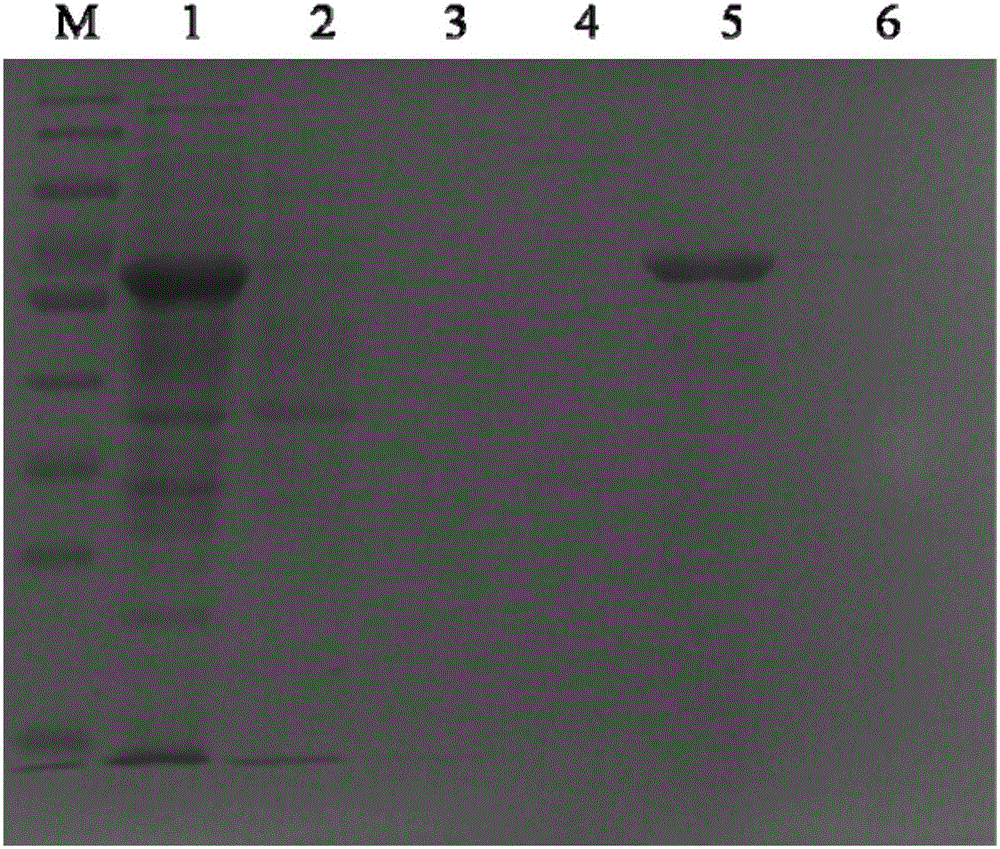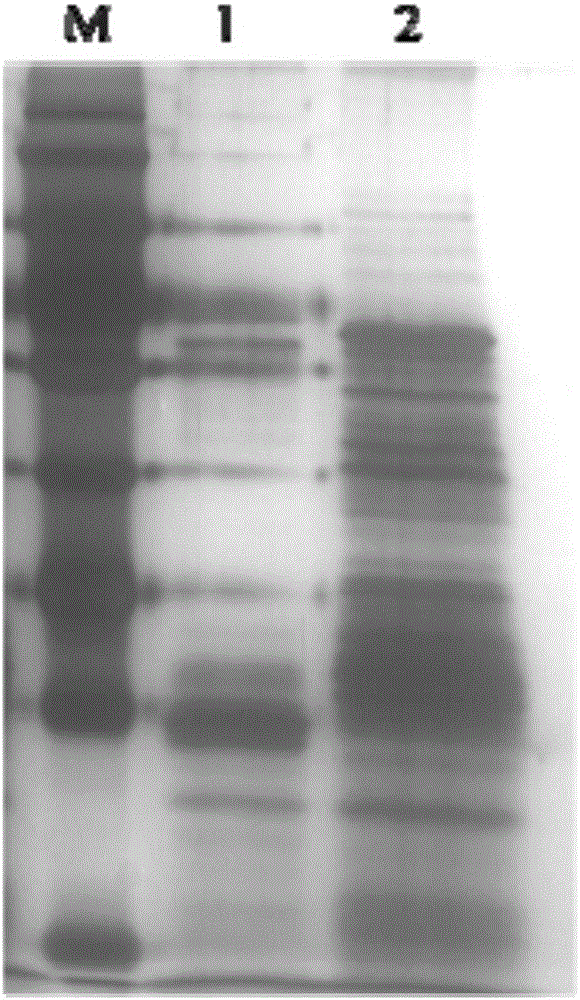Non-receptor binding protein composition of insecticidal crystal protein as well as extracting method and application of non-receptor binding protein composition
A technique of combining insecticidal crystal proteins and receptors, which is applied in the fields of botanical equipment and methods, biochemical equipment and methods, applications, etc., can solve the problems of no relevant reports and achieve the effect of overcoming the problem of resistance
- Summary
- Abstract
- Description
- Claims
- Application Information
AI Technical Summary
Problems solved by technology
Method used
Image
Examples
Embodiment 1
[0032] (1) Take 100 healthy fourth-instar diamondback moth larvae cultured artificially and put them on ice for 5 minutes; dissect them under a stereomicroscope, and peel off the complete midgut (operate carefully, pay attention to retain the midgut lumen fluid) , placed in 20mM Tris-HCl buffer; homogenate on ice for 5min, 4°C, 12000rpm, centrifuge for 5min, take the supernatant, and store at -80°C.
[0033] (2) Separation and purification of Cry1Ab1 active region protein ( figure 1 ); covalently cross-link it on the chromatographic medium Sepharose4B; take 0.2g of activated Sepharose4B (1g of Sepharose4B is fully swollen to 5mL after activation), add it to the Cry1Ab1 protein solution, and incubate on a shaker at 25°C for 6h; Add 10mg of glycine, react for 6h to block the remaining groups; put the covalently cross-linked Cry1Ab1 chromatography medium Sepharose4B into the chromatography column, wash 10 column volumes with 1M NaCl solution, then wash 10 column volumes with deio...
Embodiment 2
[0038] Get 50 of the healthy fifth instar beet armyworm larvae of artificial culture, all the other operations are the same as embodiment 1, it can be seen that the non-receptor binding protein composition of Cry1Ab1 in the midgut of different pests has something in common and also has differences ( image 3 ).
Embodiment 3
[0040] Using short peptides derived from insect crystal protein sequences, combined with the corresponding non-receptor binding protein composition in the pest midgut (such as Figure 4Shown in is the docking interface between Cry1Ab and a binding protein, short peptides can be designed according to the 184-197 amino acids on Cry1Ab, and added to the product, the short peptide can block the binding of the binding protein to Cry1Ab), or use any binding protein that can bind The chemical molecules of the corresponding non-receptor binding protein composition in the midgut of the pest (for example, the insecticidal crystal protein in the midgut is a lectin, and the lectin can be bound by a specific monosaccharide, so this monosaccharide can be added In the product, blocking the binding of lectin to insecticidal crystal protein) can improve the insecticidal activity of Cry (insecticidal crystal protein) in the form of additive without changing the existing products of the factory. ...
PUM
 Login to View More
Login to View More Abstract
Description
Claims
Application Information
 Login to View More
Login to View More - R&D
- Intellectual Property
- Life Sciences
- Materials
- Tech Scout
- Unparalleled Data Quality
- Higher Quality Content
- 60% Fewer Hallucinations
Browse by: Latest US Patents, China's latest patents, Technical Efficacy Thesaurus, Application Domain, Technology Topic, Popular Technical Reports.
© 2025 PatSnap. All rights reserved.Legal|Privacy policy|Modern Slavery Act Transparency Statement|Sitemap|About US| Contact US: help@patsnap.com



